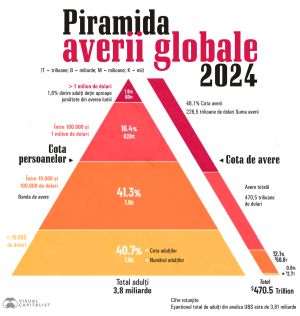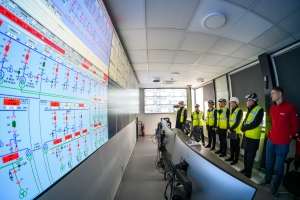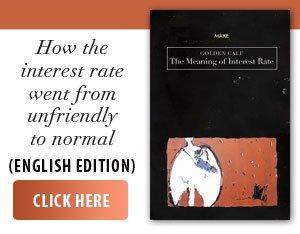The "pension apocalypse is coming"! The more or less qualified keep talking in the written press, TV and on the radio. The uncertainty is being preserved - deliberately by some, by the government members out of pure stupidity!
Truths and untruths, and especially half truths are being discussed and thrown around.
A "grandma" and a "grandpa" - acting like they're pundits - cheekily speak about the increase of the "pensions" funding deficit.
Others, who are younger and obviously prone to paranoia (just so I don't call them braindead outright) pompously state that "the government wants to confiscate the 2nd pillar money for its own benefit!". Some people beggar belief!
About the statements - rather obscure - uttered at the top and by the ignoramuses in the Opposition, what can I say? Just some people, looking to make a name for themselves.
Sure there is a "pension" deficit. What they don't tell us is that this deficit has nothing to do with the 1st or 2nd Pillar (in the latter case, it has to do with the flawed management of assets). It has to do with the "sinecures", the "non-productive ones" who get financed from the state budget, meaning out of the tax receipts!
And that is proven by the situation of the last five years of revenues and expenses of the Social Security Budget (million lei), official data from the consolidated general budget.
For the 2nd pillar, in order to what the situation is like, we need a few reminders.
1. What is the 2nd pillar? It is the system of privately managed pensions, also known as mandatory private pensions, with set contributions.
In this privately managed "pensions" system (or more accurately, a system with replacement income), the contributions are nominal and they become the property of the participant (the titleholder/insured), as soon as they are transferred to their personal account from the pension fund.
2. In 2008 the Tăriceanu government produced a solution to enact Law 411/2004 concerning the privately managed pension funds (changed through government ordinance no. 112/2007) by splitting the employees' contribution to the funding of the 1st Pillar, respectively,
- one tranche for the 1st pillar (the standard pension system based on the capitalization of rights for a replacement income) and
- one tranche for the so-called 2nd pillar (a system for the capitalization of contributions in the form of "mutual fund shares").
With lots of difficulties - like most things here! - the contributions of those concerned by the law were allocated in the form of quotas calculated as percentages of the rising median wage income.
Therefore, the 7 private pension funds active on the fund market (Aripi, AZT Viitorul tău, BCR, BRD, Metropolitan Life Pensii, NN and Vital) had accrued assets of 42.53 billion lei on March 31st 2018.
Their assets were divided as follows: government bonds - 61%, bank deposits - 8.3% and stocks 20.3%.
The number of participants (investors) was 7.111 million people.
The median monthly payment/investor was approximately 100 lei.
The actual management fee (in 2017, approximately 2.85%) amounted to approximately 1,205,550,000 lei!
Regardless of the arguments invoked, the assets that represents the patrimony of these funds - at their market value - "inalienably" belong to the participants who own the accumulated fund shares (art. 44 - The right to private ownership of the Romanian Constitution). Therefore, any argument about confiscation is just a shameless lie.
We should make up our mind on whether this funding through the split of the social security contribution which the titleholder pays out of their salary should continue or not, depending on whether it is beneficial or not!
In the beginning of the year, the current government eliminated the indirect salary income as a "patrimonial right" to cofinance annuities and, by converting it into a patrimonial liability, hit the economically active population with a neo-liberalization of the regime of the contributive pension system. With one stroke of the pen, this liberalization forces the employee to contribute 25% of their salary in order to be entitled to a replacement income (for more information, see in the November 13, 2017, issue, my essay called "Revolution or involution??").
This blatantly political measure apparently has an advantage at first glance, namely, it increases the numerator of the fraction, (the gross salary income of the titleholder) which determines the number of "pension points" accrued by the insured titleholder. Unfortunately, since it is a universal measure, so does the denominator of the fraction (the gross median wage)! But it has a major flaw. Even though at first glance the effect has been concealed, the increase of the Social Security Contribution (CAS) by 138% (from 10.5% to 25% of the gross median wage) will cut into any subsequent revenue increase, obviously to the detriment of the purchasing power of the employees' wages.
Under these circumstances, the split of the contribution "undeniably" becomes an advantage, it supports a welcome supplementation of the replacement income of the numerous active employees, - even if the quality of the management of the net value of the mutual fund share is always subject to a degree of uncertainty.
The draft law which would enact a suspension of the split for a period of six months has a different relevance, namely, the decision makers' fear that the quasi-fiscal product (the payments made as social security contributions) will not be able to support the pension point increase announced for July 1st! In that regard, see also the projections for the financing of the 2nd pillar with only 3.75 pp (of the 25 !) instead of 6.0 p.p for the year 2018.
In my opinion, the discussions concerning the replacement incomes are still far from the economic truth. Abandoning the "pension points" (an essentially political instrument to keep the electorate in check during their economically active years), standardizing the mechanism for the sizing of the retirement that titleholders are entitled to "by law" (the pensions themselves) to match that of the annuities financed through contributions and their rewriting through the notional accounts system - with inflation adjustment - are the only elements that can produce a solution to the apparently unsolvable problem of the income of middle aged people. That is to say nothing of the dynamic consolidation of employment and the investments that generate jobs.



























































